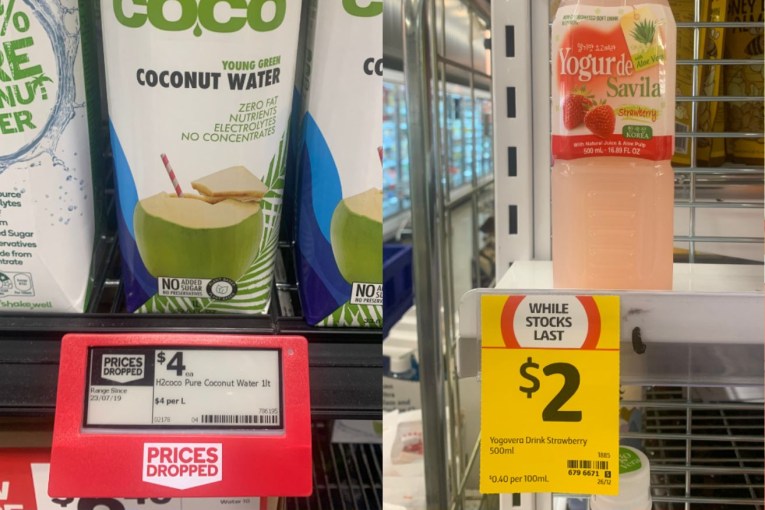The Stats Guy: Fad or forever? The pandemic’s life-changing trends and legacies


How Australians shop and work has changed during the pandemic, but will the trends last? Photo: TND
There were so many parcels at my front door last week that it felt like Christmas. It wasn’t of course. I was just doing what everyone else has been doing during the pandemic. Puzzles, walking (so much walking) and shopping online.
How Australians shop has changed during the pandemic. That’s interesting but I’m the Stats Guy so it’s more than interesting to me. I want to know if the trend will last? Once the pandemic is over, will we go back to wandering down to our local strip to check if those oh-so-cool jeans really fit, or if the colour of those sneakers is just right? Or will the parcel guy remain our new best friend?
Fad or forever? This is how I rate the chance of a new way of doing things sticking long-term. If we enjoy a behaviour that was first forced on us, we’ll want to make it part of daily life. If a forced behaviour change is just a way to kill time or a substitute for what we really wanted to do, we’ll revert to old ways when we can.
Take working from home. Many companies didn’t allow staff to work remotely. Commuting (a soul-destroying waste of time) was an unavoidable evil. After all, we had to get to work somehow. Suddenly employers were forced to trust staff to work remotely. And guess what? The sky didn’t fall in. Productivity didn’t go down and now many workers can’t imagine going back to the office five days a week. The implications for commercial real estate are huge.
Working from home is here to stay, and it isn’t the only way we made online a more permanent part of our lives during the pandemic. We also bought more stuff online than ever before. For some older folks, the pandemic meant ordering on Amazon for the first time. Many people had shied away from buying clothing online because they want to see if those jeans fitted just right. Not now. At the height of the lockdowns, we even took to grocery shopping online. Coles and Woolies home delivery services helped save time while avoiding potentially dangerous human contact.
Everyone wants to know if this trend will last. The answer will change the lives and livelihoods of many. Commercial landlords and business owners in particular will be sweating on the answer.
Our friends at the Australian Bureau of Statistics can help. They publish monthly retail data that shows how we shop. Since data collection began in 2013, the share of retail sales that took place online has slowly crept from 2.1 per cent to 6.6 per cent in February 2020. That’s our pre-pandemic benchmark. Had the rate of growth continued like previous years, by March 2021 we would’ve expected 7.3 per cent of retail sales to have happened online.
But because of the pandemic, the increase was much steeper. In April 2020, online retail sales shot up to 11.1 percent. But as individual states and territories tackled the pandemic, fewer lockdowns were needed and some online retail sales went back to bricks-and-mortar shops.
But there’s an important observation here. Only some of the additional online sales went back. Some online shopping behaviours seem to have stuck. We appear to have settled at around 9.4 per cent of all retail being done online. That’s about two percentage points higher than what was expected without the pandemic.
Only two percentage points? While that doesn’t sound like much, we are talking about piles and piles of money here. Every percentage point shifting to online sales translates to $3.6 billion that isn’t spent in local shops. The pandemic seems to have permanently channelled the annual sum of around $7.5 billion away from bricks-and-mortar to online.
That’s significant. It changes how the Australian workforce looks. We need fewer checkout clerks and customer service workers but more delivery drivers and warehouse staff. The online shift isn’t dramatic enough to eliminate the need for bricks-and-mortar stores but it is a reminder that shops need to work harder than ever to attract customers. Haptic experiences (squeeze the avocado, squeeze into the jeans), personalised service and expertise drive customers to shop instore. Shops that offer nothing but shelf space will struggle.
Manufactures don’t care whether their washing machines, books, or Weet-Bix are sold online or in-store. A sale is a sale. Are you eating your burger in my restaurant or is UberEats delivering it to your home? Who cares, a sale is a sale.
However, the shift towards online retail is however of great concern to some. Namely, the middleman. The owners of retail properties hope that we don’t shop online. Platform owners hope that we order everything online.
While I’m confident we’ll leave sourdough and puzzles permanently behind as relic pandemic behaviours, I am convinced that higher online retail sales are here to stay.
Local councils and business organisations are rightly worried about high streets with vacant store fronts. They look bad. Vacant shops signal a struggling neighbourhood and don’t invite people to spend time locally.
Those vacant shells desperately need life breathed back into them. If retail doesn’t work, we have to think of other ways to keep our shopping strips alive.
Here’s a few thoughts. Could local artists and artisans be actively wooed to lease empty shopfronts at low cost? How about a pop-up mini library managed by the local branch? Maybe a playcentre for kids? The ideas are endless.
It doesn’t matter so much what we do with empty shops but we must make them available for creative usage at a low cost. That means one thing. We need black-skivvy creative types to move in – now. They will be the perfect delivery.
Demographer Simon Kuestenmacher is a co-founder of The Demographics Group. His columns, media commentary and public speaking focus on current socio-demographic trends and how these impact Australia. Follow Simon on Twitter or LinkedIn for daily data insights.








